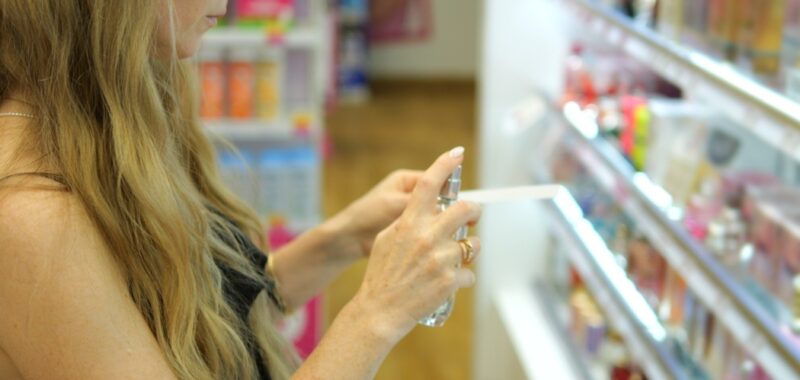This year, the worldwide fragrance market was set to generate revenues of EUR 54.6 billion (USD 62.11 billion), according to Statista, with a 3.31% CAGR growth predicted over the next five years (2025-2030). The US held the lion’s share of the global fragrance market, forecast to pull in revenues of EUR 7.9 billion (USD 9 billion) in 2025.
So, what trends were shaping the world’s biggest fragrance market? And how were brands tapping into opportunities in this space?
Four fragrance trends to watch
Jennifer Stansbury, co-founder and managing partner at US market research firm The Benchmarking Company, said there were four clear trends shaping US fragrance innovation, the first one being skinification.
Addressing attendees at last month’s in-cosmetics 2025 tradeshow in Amsterdam, Stansbury said the US fragrance consumer was looking for “skin-friendly products”.
“The consumer is really demanding fragrance that has a benefit on the skin,” she said. “Innovative brands and ingredient providers are providing products that not only smell great but have skin care benefits – hydrating, clearing or brightening.”
The second trend carving change in fragrances, she said, was personalisation. “This is a trend we’ve been talking about in the beauty space for a decade, but we’re seeing it more in fragrance now.”
Today, US consumers were looking to create very personal fragrances by layering and blending products and many brands had stepped up to this, offering sets that enabled consumers to mix and match for new scents on a daily, monthly or mood basis.
The third trend in US fragrances, Stansbury said, was sustainability – more important than ever now.
Since 2020, there had been a significant rise in “conscious beauty”, she explained, with sustainability now more important across every aspect of the beauty supply chain. And fragrances had seen “a rise in more water-based fragrance solutions and refillable packaging.”
The fourth trend creating a new playing field for fragrances, Stansbury said, was the social media boom. “Whereas we used to walk the aisles of a retail store and smell something, now social media is introducing consumers to fragrances they wouldn’t have previously thought of.”
Sol Janeiro was a good example of this, she said, working with more of a push marketing style across social platforms versus pull marketing to build its “entire business on unique fragrances.”
Beyond the perfume bottle
But when looking at the US fragrances market, Stansbury said it was important to acknowledge the swathe of different products entering the market – product proliferation was high.
There had been an uptick, for example, in hair and body mist launches from both prestige and mass brands, she said – a “playful” and “more affordable” product type hugely popular in the 1980s and 1990s that was hitting the market again “in a mass way”.
For brands, she said launching a hair or body mist enabled a low-cost connection with consumers, helping discovery and engagement. And according to The Benchmarking Company’s January 2025 consumer study amongst 4,000 US consumers (3,800 women and 200 men), 65% were buying body mists because they enjoyed variety. Denise Herich, fellow co-founder and managing partner of The Benchmarking Company, said even more consumers (71%) were interested in using these products, particularly if they offered skinification benefits.
All-over-body deodorants were also upticking in the US fragrance market, Stansbury said, with a variety of innovations offering layering systems and essential oil blends. Herich said study data indicated 41% of consumers were interested in trying all-over-body deodorants, with the scientific and tech-driven aspects of these products holding strong appeal, such as temperature-release fragrance technologies.
Stansbury said scent was also becoming increasingly central to other beauty categories – the likes of skin care, hair care, sun care, body care and wellness lines. Hair care, in particular, she said, had seen a lot of fragrance innovation in recent years, with brands working to offer long-lasting scents in styling sprays, for example. “Liking the way something smells on your body is important, and in hair care especially, [the consumer] wants a smell that lasts all day because it’s in her personal space.”
According to The Benchmarking Company, popular scents in the US were florals with fruity and gourmant aspects and vanilla.
The ’why’ behind fragrances
Herich said that behind all this, there was some interesting data on why US consumers engaged with fragrances.
The consumer study showed 88% of US consumers used fragrances to smell good, 73% used them to enhance the overall sensory experience of what they were doing, and 69% used fragrances to impact mood – to promote things like happiness, relaxation or focus.
And mood, Herich said, was something brands could look at more, given the study indicated 99% of consumers believed a fragrance could impact their mood and 96% believed it evoked strong emotional connections, feelings and memories to ultimately enhance emotional wellbeing.
US consumers also had “aspirational reasons” for using different scents, the co-founder said, with 74% wanting to feel confident, 59% wanting to feel attractive, happy or feminine, and just over 50% wanting to feel sexy, sophisticated, flirty and playful.
All these insights, Herich said, were key for future fragrance developments in light of consumer demand for “innovation and exploration” in this category.

